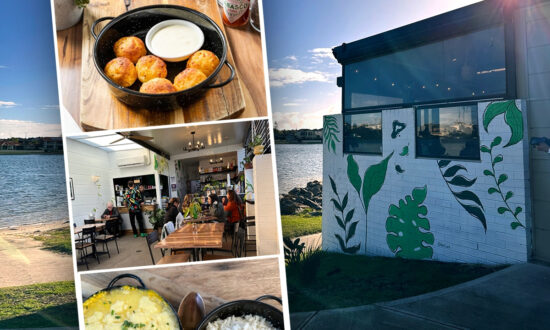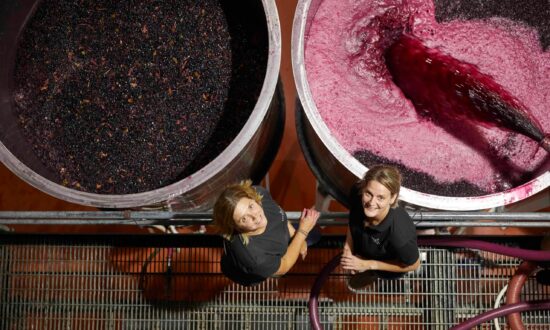There has been for years a certain kind of rivalry between the Barossa Valley and McLaren Vale when it comes to Grenache.
Where it sits on the spectrum between healthy and unhealthy is uncertain. There have been semi-official challenges and taste-offs and, now, more serious national Grenache trophies that usually end up as a grand-final affair between the two regions.
Fortunately, everyone’s got to a point where they can claim a champion, of sorts, in such affairs, but weirdly never any runners-up. Everyone seems to be having a love affair with all manner of Grenache variations in style: it’s a classic case of it not mattering if you win or lose, but how you play the game.
In my last column, I looked at McLaren Vale’s revered Blewitt Springs district and why Grenache seems to have a special connection with the area.
This week it’s all about the Barossa Valley with a special focus on its own strip of ground that nurtures what many regard as the region’s most exciting Grenache wines – with a couple of side trips for context given the vast array of landscape, soils and wine styles.
That strip is known as Vine Vale, on the rise into the eastern foothills of the Barossa Ranges. It has one key similarity to McLaren Vale’s Blewitt Springs district – sandy grounds – which winemakers agree gives resulting Grenache wines fragrance, lightness and, in Vine Vale, even a much-desired fine sand-like minerality in the palate and finish.
This soil thing can lead us down complex geological rabbit holes, but generally what lies in this area is sand sitting over a deep layer of clay. That combination is key to why Grenache vines, many of which have been in the ground here for decades and some for more than a century, thrive here.
Michael Hart, from Hart of the Barossa, explains his unique patch of ground.
“You can get some parts of the vineyards that are like white sand beaches, and some where more loam and organic material has built up on top and deeper you go the sandier it gets,” he says.
“Because we’re on the foothills, along the ranges, and there are about 20 little creeks that trickle down the hills, all that alluvial wash came down over time. That’s why you get more sand here, as opposed to say the western Barossa, where there’s more clay and chocolately soils.”

Amelia Nolan at Alkina getting up and close with her vineyard’s soil profile. Supplied image
The good thing is that a few metres below the sandy loam is a layer of reddish clay that holds on to the groundwater, so when a vine’s roots get down there, they quench their thirst and don’t need as much watering as they might in other soil profiles.
Christian Canute from Rusden Estate on Magnolia Road in the Vine Vale district adds his observation.
“The sand insulates the clay underneath so it stays wetter longer than the clay does in the western Barossa. The roots are wetter and cooler, and the vines produce larger berries that are a lighter colour than in the west – ours are a purple-pink tinge,” he says.
“I think it’s the water sitting under the sand that pushes the fruit later in the season so it’s a longer ripening time that leads to more complexity and spicy characters, which is ideal in lighter varieties like Grenache.”
Enough soil science for today. Now for some geography.
Marco Cirillo of Cirillo Estate notes that the elevation and distance of Vine Vale from the ocean are critical in its warm days and cooler nights during the growing season, those temperature differences allowing vines to recover overnight from the heat of summer days.
That and sitting on the ridge below Menglers Hills and Angaston means a natural flow of cool air rolls down the range towards the west late in the day and evening.
All this results in fruit with elegant characters particular to the area. But you still have to take into account the sand as well, Cirillo says. The finest Grenache in the world combines that combination of elevation and sand – Chateauneuf du Pape in France, Blewitt Springs in McLaren Vale, Vine Vale in the Barossa – which produces a finesse in their wines rarely seen elsewhere.
“Without finesse, you don’t get good Grenache – it’s all about finesse, and yes, you can have that with texture and weight,” Cirillo says.
For his own wines, he looks for medium-bodied style: slightly spicy, and slightly fruit-forward characters without too much of anything else getting in the way. In many ways, that describes the best kind of Grenache wine from Vine Vale.
There are, of course so many other factors to add to this discussion. Cirillo Estate’s old vines – and many others in this strip – are paramount to the quality of many wines, which he puts down to the fact they are healthy vines that have survived for up to 174 years, the age of his family’s ancestor vineyard thought to be the oldest Grenache block in the world.
“The old vines have a consistency vintage to vintage,” Cirillo says. “That vineyard has been a good vineyard for 174 years – that’s why it’s still in the ground.
“It’s the old cliché: old vines aren’t good just because they’re simply old. They’re old because they have always been good (otherwise they would have been pulled out).”
Their consistency in ripening, no matter what the season brings, and grape quality, indicate the variety thrives here.
Many of these oldies are trained into what are traditionally called bush vines, which also are important for Yalumba winemaker Kevin Glastonbury, who crafts several different Grenache styles from the area. One, the Vine Vale Grenache, depends on 100% whole bunch inclusions, while another, called the Tri-Centenary, depends on up to 250 days of skin maceration. Their nuanced style variations are one thing, but their success depends on the bush vines and their particular way of ripening, which encourages Grenache as a variety that is lighter and prettier than other reds from the region.
“Vine Vale adds a lot to the discussion (about what defines richness, generosity and complexity in Barossa Grenache without it having to be overly robust and weighty),” Glastonbury says.
They like softer wines that are flavoursome and don’t kill their palate or don’t kill the food they are eating
There’s another side to this that needs to come from those growing and making Grenache in other parts of the Barossa Valley, particularly the western ridge.
Amelia Nolan at Alkina, just north of Greenock, explains that the vineyard there is essentially degraded limestone and schist with clay, but the key to Alkina’s ethos is that what lies beneath can change dramatically within the space of even five to 10 metres. Having explored those differences through several digs across the vineyard, Alkina now makes a series of wines that relate to each specific soil type.
“We’re still trying to understand it, but the Grenache we get from the patches of limestone is more perfumed, lighter and elegant than the wines we are making from the schist and clay areas,” Nolan explains. “Both have plenty of power, though the limestone is more restrained and elegant and the schist we say is more ‘wild’.
“The clay gives a certain richness, but it’s important to note that it’s not deep, concentrated, heavy richness. We are still dealing with a lighter wine but set in a bigger structure.”
Because the soil makeup across the western ridge district is so irregular, Nolan argues that it’s impossible to say all they make are big powerful wines – every block will yield something different.
Winemaking is then critical, centred around using concrete egg and tulip-shaped vessels and largish proportions of whole bunches, all of which help to showcase tannins and freshness.
“We want a wine that’s incredibly alive when you drink it, and drinkability is critical,” she says.
“You want a moreishness, a freshness. It can’t be cloying; it can’t be heavy in any way.”
For many in the Barossa, finding the point where Grenache has regional richness and generosity without heaviness is the key to getting the best out of the variety.
For winemaker Stuart Bourne, that equation is evident in his Soul Grower Wines Persistence Grenache, in which richness is expressed in a matrix of fruit intensity and palate vitality.
“Richness is about fullness of flavour, whereas sheer, raw horsepower of tannin is a completely different creature,” Bourne explains.
“Wines like Persistence are beautifully rich wines because they fill your mouth with flavour and not just with tannin mouthfeel.”

Kevin Glastonbury at Yalumba crafts several Grenache wines from old bush vines. Supplied image
Bourne’s passion for Barossa Grenache is unbridled. Its drought tolerance and capacity to handle hot summers means it’s built perfectly for the region’s climate, and will continue to make good wine in a changing climate.
From a consumer point of view, it has come into its own, he reckons, because younger drinkers love its style.
“They like softer wines that are flavoursome and don’t kill their palate or don’t kill the food they are eating,” he says.
“With its soft tannin profile, Grenache makes beautiful wine that doesn’t offend anyone – it’s going to make a person who doesn’t drink wine all that often want to try more wine. It’s soft, fresh, light, and silky.”
At the same time, there’s a new credibility now given to Grenache as a fine wine, with authenticity, honesty and history, Bourne says.
“It’s always been known as a workhorse variety, but now we are putting those old vineyards and their wines on a pedestal and saying ‘Hey, look at this.’
“I cannot believe how exciting the Grenache space has become.
“If you want to introduce someone to wine, give them some Grenache. If they already like wine, give them some Grenache. If they truly love wine, give them some really smart Grenache.”
Six small family winemakers along Light Pass Road in the Vine Vale district will open their private sheds for tastings next Sunday, October 9, from 12-4pm. The Vine Vale Shed Day is one of SA’s special wine experiences, taking in Tim Smith Wines, Hart of the Barossa, Heidenreich Estate, Steinborner & Reynolds Family Vineyards, Kurtz Family Vineyards and Cirillo Estate Wines. Keep in touch via socials for updates about food, wine and other offerings at each shed: #vinevalewinemakers @vinevale.winemaker
TASTING NOTES

Rusden Driftsand Grenache Shiraz Mataro 2021
Barossa Valley-Vine Vale / 14% / $22
All estate fruit from the Vine Vale sandy country with a certain Barossan feel to it. This has a distinctive Grenache edge of aromatic fragrance over the top of slightly darker colour and flavoured Shiraz mid-palate, while a spice “seasoning” is all about bush vine Mataro. Generous, rich in its energy and intensity in the mouth, thanks to retained acidity and freshness through the palate. It’s very drinkable and brilliant value. As a comparison, the Rusden straight Grenache, “Christine’s Vineyard” 2021 ($49), is light in colour and more fragrant in its varietal expression, with a vibrant mouthfeel and superfine tannins. Its delicacy is delightful and persuasive.
Cirillo Estate The Vincent Grenache 2021
Barossa Valley / Vine Vale / 14% / $25
From the northern end of the Vine Vale strip at the eastern rise into the foothills towards Angaston. Crafted from vines planted in 1901 and 1906, grower/winemaker Marco Cirillo has encouraged a joyous feel to this wine, fragrant with its varietal crushed red fruits and a sense of sandy minerality, while the palate sings with vibrant raspberry/cherry-like richness, swirling infinitely. Tangy, lip-smacking and delicious. For something very special, a revered 1850 Ancestor Vine Grenache sibling wine from what is believed to be the oldest Grenache vineyard in the world is one of the rare gems of Australia’s wine culture – a new 2016 vintage will be released later this year.
Hart of the Barossa The Hohepunkt Grenache 2021
Barossa Valley/ Vine Vale / 12.5% / $30
An inaugural outing for the Harts as a single varietal, certified organic wine, harvested early for a fresh style with attractive fragrance to start, including what seems like a sub-district character of crushed rock and fine sandy notes. Steered from the get-go as a red-fruited, almost tangy variation, it gathers complexity with a peppery spice feel towards the finish, which is soft and gentle in the tannin profile. A lovely, lighter expression of the variety.
Soul Growers Persistence Grenache 2021
Barossa Valley / 14.5% / $60
Sourced from two vineyards in separate districts of the Valley, this is the best-of-vintage, two-barrel selection that offers a Barossa lean into what the phrase “power with grace” can produce in a wine sense. As Grenache should be, it’s lighter in colour and the aroma is fragrant – here with a sense of sandy bush country florals, almost saline, almost a little nori seaweed like umami note, and perhaps a little charry too. Lots to take in before you even taste the wine, the fruit crisp, like crunchy berries, and a suggestion of blackberry and apple pie flavour without being baked or cloying. Lots of energy, lipsmack and flavour to finish, which display a regional sense of intensity while still being medium-bodied. A nimble wine with hidden powers.
Yalumba Vine Vale Grenache 2020
Barossa Valley/ Vine Vale / 14% / $40
From a single 1949 planted block that Yalumba’s Grenache specialist Kevin Glastonbury has directed to be 100% whole bunch iteration. (A sibling Yalumba The Tri-Centenary 2019 Grenache is all about 250 odd days of skin contact – so we are in very confident territory here because both styles are fabulous.) The VV is all about purity, both directly from the fruit and site and also the gentle winemaking involved. It’s perfumed with a mix of sun-kissed red berries and a waft of rose petal. These top notes remain while the palate delivers a subtle amaro-like bite, touching not grasping, peppery spice adding a finishing seasoning. Totally engaging – a Barossa Grenache that has all the finesse and elegance of the finest of Pinots.

Get InReview in your inbox – free each Saturday. Local arts and culture – covered.
Thanks for signing up to the InReview newsletter.
Alkina Old Quarter 2020
Barossa Valley / 13.8% / $100
The Alkina story is complex and deeply committed to tracking the subtle differences in minute sections of their vineyard on the western side of the Valley, just outside Greenock towards Kapunda. The Old Quarter is a 60:20:20 blend of Grenache, Shiraz and Mataro, with the Grenache playing a leading role in its minerality and fragrant influences, which seem to tame otherwise Barossan exuberance on the palate. The wine, like most of the Alkina variations including a single varietal KIN Grenache ($35) focuses a lot on its tannin profile, which provides quite a textural ride and makes it and the KIN and associated sibling micro-site offerings very complex and serious Grenache statements.
Support local arts journalism
Your support will help us continue the important work of InReview in publishing free professional journalism that celebrates, interrogates and amplifies arts and culture in South Australia.
Donate Here




